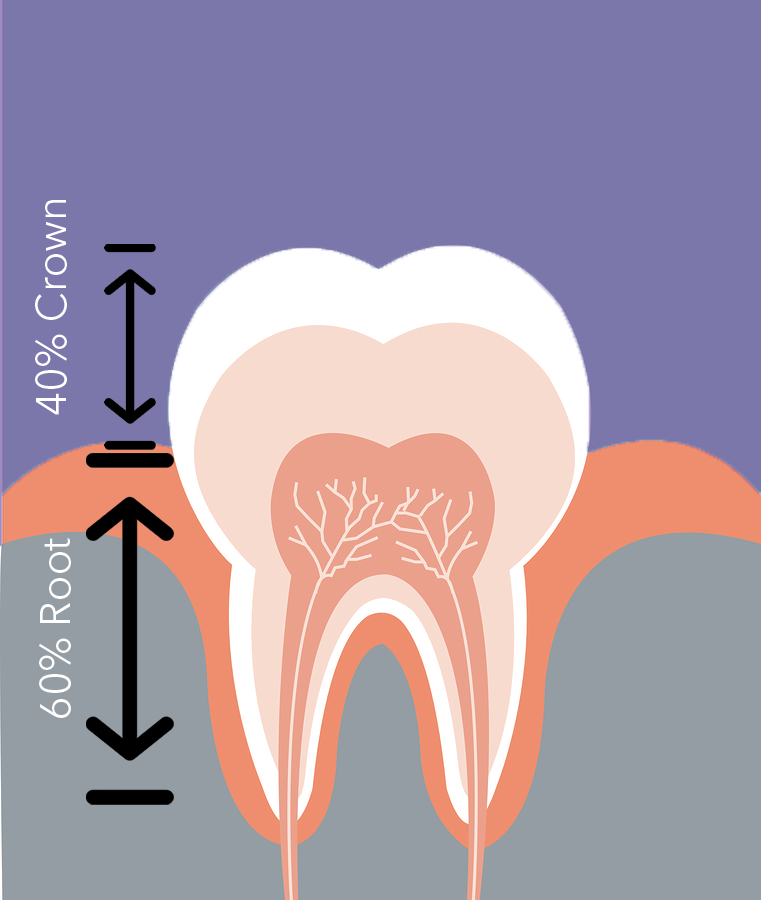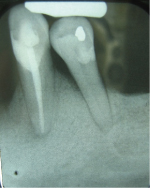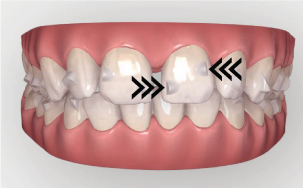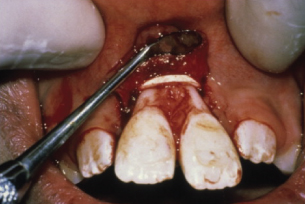

Gap Bands
If you have a small gap in your front teeth, why spend $5,000-$6,000 on braces or clear aligners when you can get some gap bands on Amazon for $6.99? Seems like a no brainer since all you need to do is move two teeth a little bit closer together. However easy it may seem to move two teeth a little closer together, there’s more to this process than meets the eye.
Let’s break this process down.
When someone with a slight gap comes into the orthodontist’s office, the common treatment protocol is either braces or clear aligners. When shifting teeth, the real challenge is shifting a tooth evenly. Teeth are similar to icebergs where there’s more to the tooth than just what we see. In a healthy tooth, the crown (what is visible to the naked eye) makes up 40% of the entire tooth, while the root makes up the other 60%.



If there was one-way pressure applied to the tooth (similar to what gap bands do), the crown would shift but the root would stay in place. In an x-ray your tooth would look something like this:



The gap may get smaller, but the esthetics will not look right as the teeth are no longer upright, and it will also cause issues with your gums and nerves in the teeth. The way that braces and clear aligners work is by taking into account the biomechanics of translation. In physics, a force that acts through the center of a body results in movement. A force whose line of action which does not pass through the body’s center of gravity is called an eccentric force and results in movement and rotation.
Simply put, if you push through an object’s center it will stay in its initial position as it moves. If you push one side of the object, it will still move in the direction you pushed it, however, it will begin to rotate. The braces and clear aligners use what’s known as a coupling movement. This is basically a counter force that keeps the entire tooth straight as it moves. The braces do this with the brackets while the clear aligners do this with an attachment that is added to the tooth that applies the counter force.



Other issues with gap bands and similar tools.
Besides gap bands, people have used everything from regular rubber bands to thin wires and even fishing lines to try to get their teeth to come closer together. One negative consequence of these tools is a big possibility of infection. These items have not been properly sanitized most of the time and the material that these tools are made from aren’t meant to be kept in the mouth which results in the breakdown of the material from the saliva’s digestive enzymes. Another risk of using these tools is that there is a good chance that it will be swallowed up by your gum. This sounds unrealistic, however it has happened time and time again.



If this happens, it could cause permanent damage to your gums and teeth due to bacterial infections and sometimes results in the loss of the teeth. Another risk associated primarily with metals used to bring teeth together such as paper clips or chicken wire is its effects on the
enamel. Unlike braces, which use softer metals and use safe adhesives to hold the braces in place, a metal wire will slide and scrape along the tooth which degrades the enamel. Over time this can lead to tooth decay and infections.
At the end of the day Orthodontists go to school for 12+ years for a reason. They are taught how to conduct these procedures in the best and safest way possible. Trying to adjust your teeth in a DIY kit is just a recipe for disaster. At Yang Orthodontics we understand that paying $5,000+ to fix a minor gap is too much. That’s why we offer a service specifically meant for minor tooth gaps called Revitalign. With Revitalign you can correct your smile in half the time and at a fraction of the cost of regular braces and aligners. Schedule a free consultation today to learn more about Revitalign and how it can help change you smile.
